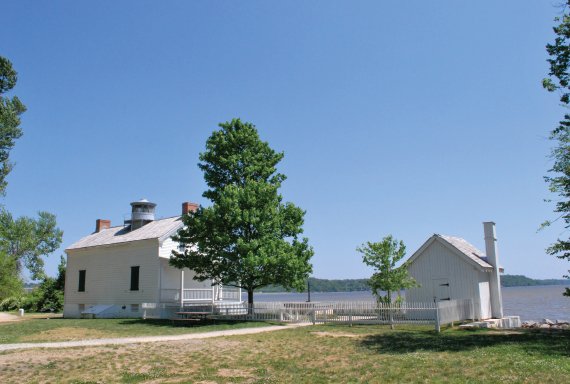Discover History: Check Out Jones Point Lighthouse VA
Discover History: Check Out Jones Point Lighthouse VA
Blog Article
Discover the Rich History of Jones Factor Lighthouse: A Historic Landmark to Check Out
Snuggled along the banks of the Potomac River exists Jones Factor Lighthouse, a sign with a storied past that beckons expedition. From its simple starts to its critical role in leading naval vessels, the lighthouse stands as a silent witness to history. As we map the advancement of this historical landmark, uncovering stories of technological advancements, wartime relevance, and recurring preservation initiatives, a much deeper understanding of its heritage arises. Join us as we begin on a journey via time, unwinding the abundant tapestry of Jones Factor Lighthouse and the keys it holds.
Early Building and Objective
Created in the early 1850s, the Jones Point Lighthouse was originally developed to assist ships navigating the treacherous waters of the Potomac River. This historical site, located in Alexandria, Virginia, served as a vital navigational aid for maritime web traffic entering the dynamic port of Washington, D.C. The lighthouse, standing at 39 feet tall, included a distinctive white tower with a red lantern area that released a constant light beam of light, assisting ships safely maneuver via the river's networks and stay clear of unsafe shoals and sandbars.
Commissioned by Head Of State Andrew Pierce, the construction of the Jones Factor Lighthouse was looked after by architect Henry Poole, who created the framework to stand up to the harsh weather conditions of the river while keeping its capability as a sign of safety and security. The lighthouse's strategic place at the southern suggestion of Jones Factor Peninsula supplied ideal presence for inbound vessels, directing them towards the docks of the nation's resources. Today, the Jones Factor Lighthouse stands as a testament to its naval heritage, drawing in site visitors eager on discovering its rich background and value in leading maritime trade throughout the 19th century.
Evolution of Lighthouse Technology

Modern lighthouses are now furnished with automated LED lighting systems, GPS synchronization, and progressed keeping track of technology. These advancements have not only made lighthouses more dependable yet have also minimized the demand for hand-operated upkeep, making them more cost-effective and ecologically friendly. In addition, the integration of radar and radio interaction systems has actually even more improved maritime safety and security by supplying real-time info and assistance to ships browsing treacherous waters. The evolution of lighthouse technology continues to play a vital function in making certain the safety of seafarers and the protection of coastlines worldwide.

Function in Maritime Navigation
Navigational help given by lighthouses have long served as beacons of safety and security, directing ships with treacherous waters and making certain the protection of maritime routes. Jones Point Lighthouse, with its strategic area at the assemblage of the Potomac River and the Chesapeake Bay, played a critical duty in maritime navigating during the 19th and early 20th centuries (Jones Point Lighthouse). Mariners relied upon the lighthouse's unique light patterns to recognize their setting, avoid dangerous shoals, and securely browse the busy rivers of the region
Jones Factor Lighthouse also worked as an essential recommendation point for ships approaching the busy port of Alexandria, Virginia, aiding in the efficient activity of goods and guests. Its existence not just protected vessels from potential threats yet likewise helped with the growth of maritime profession and commerce in the area. Today, while contemporary navigational technology has largely changed conventional lighthouses, Jones Factor Lighthouse stands as a important source historic site, reminding us of its substantial payments to maritime safety and security and navigation.
Link to American Civil Battle
During the tumultuous age of the American Civil War, Jones Factor Lighthouse's calculated positioning remained to play a critical role, albeit with a new importance tied to the problem's influence on maritime tasks in the region. The lighthouse, located at a critical time along the Potomac River, worked as a crucial navigational aid for Union and Confederate vessels alike. Jones Point Lighthouse parking. Its sign aided guide ships with the treacherous waters, aiding in the transportation of soldiers, supplies, and communication vital to both sides of the dispute
Jones Factor Lighthouse stood as a silent witness to the intense struggles that took location on the water. Union requires heavily counted on the river for troop activities and supply lines, making the lighthouse a crucial aspect in their logistical chain.
By doing this, Jones Point Lighthouse came to be not just an icon of security and assistance yet likewise a critical possession in the rough waters of the American Civil War.
Repair Initiatives and Preservation
Amidst the passage of time, considerable strides have been made in the reconstruction and conservation of Jones Factor Lighthouse, guaranteeing its historic heritage withstands for future generations. Originally constructed in 1855, the lighthouse has weathered years of wear and tear, prompting repair efforts to keep its architectural stability and historical relevance (Jones Point Lighthouse activities). These initiatives consist of precise reconstruction job on the lighthouse's iconic red block outside, the substitute of corroded steel parts, and the installation of safety layers to protect the structure from environmental components
Joint partnerships between federal government companies, historical conservation companies, and devoted volunteers have played a crucial duty in funding and executing these reconstruction jobs. Through their synergies, Jones Point Lighthouse stands today as a sign of marine history along the Potomac River, using visitors a glance into the past and a connection to the location's rich maritime heritage.
Verdict
Finally, Jones Factor Lighthouse stands as a considerable historic site with a rich background going back to its early building and construction and function. Via the development of lighthouse modern technology, it played a vital role in maritime navigating and has connections to the American Civil War. Reconstruction efforts have actually preserved this crucial item of history for future generations to check out and value.
Please visit one of our local supporters - Estrella Esthètique Makeup For Events Near Me
Report this page